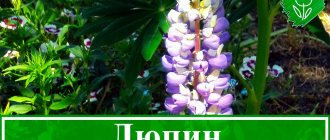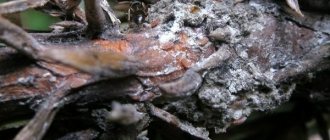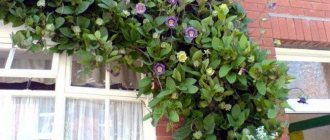Portrait of a plant
Cotoneaster (Cotoneaster) is part of the genus of the same name in the Rosaceae family. In total, there are more than 80 species in this genus, which are represented by deciduous or evergreen shrubs of varying heights (from 0.3 to 3-5 meters). More than 40 species of this plant are found in our country.
A large number of simple leaves of a dense green color, located alternately (one after another) on the branches, almost completely cover the bushes. They are attached to the shoots with short petioles. As the autumn months approach, the leaves turn red.
Cotoneaster flowers are pinkish or white, solitary or united in small inflorescences such as a multi-flowered raceme or corymb. Spherical shiny fruits of red or black color with several seeds inside stay on the bushes until late autumn. They give the bushes a spectacular appearance that lasts for a long time.
How is cotoneaster planted? What kind of care does he need? What subtleties of growing cotoneaster do you need to know? Read more about this.
Benefit
The main advantages of a plant such as cotoneaster include the following:
- beautiful appearance that attracts birds;
- the presence of certain varieties of vitamins and nutrients in the fruits;
- widespread use in folk and traditional medicine;
- ease of care;
- presence of evergreen varieties.
Planting cotoneaster
Selecting a location
For planting this crop, it is best to select areas with good lighting and permeable soil with a small amount of nutrients.
| Areas where stagnant moisture forms are completely unsuitable for cotoneasters; they will not grow in such conditions. |
Almost all types and varieties of cotoneaster tolerate partial shade well, and Dummer's cotoneaster and varieties created on its basis can grow in the shade. And yet, this culture grows and develops better with full lighting.
The soil
Cotoneaster is undemanding to soil fertility and moisture. The best type of soil mixture is made from peat soil, sand and turf soil. Moreover, turf soil and peat soil are taken in 2 parts each, and sand – 1 part.
Landing dates
Seedlings with a closed root system can be planted from spring to mid-August. The bush manages to take root and adapt before the cold weather.
It is advisable to plant planting material with an open root system in spring (April-May) or autumn (September-October), although plants planted in summer have a high probability of taking root.
Landing technology
- Holes for this crop are dug to a depth of 50 to 70 cm, and a layer of drainage 10 to 20 cm high of gravel or coarse crushed stone must be poured at the bottom. The width and length of the hole is usually from 40 to 50 cm, depending on the size of the root system of the seedling.
- When planting container plants, a 7-10 cm layer of soil must be poured over the drainage layer, then the seedling is placed and then the space between the wall of the pit and the lump with the root system is filled with soil.
- The place where the trunk ends and the roots begin to grow (the so-called root collar) is located at the level of the soil surface.
- After planting, water the bush with plenty of water, add settled soil and mulch the surface with peat, husks or wood chips.
| It is worth knowing that after planting container plants, you should not compact the soil around them too much, so as not to destroy the earthen ball with roots. The distance between planted cotoneasters can vary from half a meter to 2 meters, depending on the size of the plant in adulthood. |
Cotoneaster on a trunk
On sale you can find cotoneasters grown on a standard. Usually these are creeping species (horizontal, Dammera), grafted onto hawthorn or rowan. The height of such plants is from 60 cm to 1.5 m.
This “tree with berries” looks charming, but is suitable for growing mainly in the southern regions. It survives winter poorly in more severe areas. To prevent the cotoneaster on a standard from freezing, it must be bent to the ground and covered, just like standard roses.
general description
Representatives of the Rosaceae family are represented by lush bushes with a dense crown formed by strongly branching shoots. Horizontal cotoneaster is a native of China, which does not shed its leaves with the arrival of winter, continuing to decorate the area. The culture owes its name to its structure: the branches spread along the ground and do not exceed a height of 1 m. And the diameter of the crown can reach 2 m, allowing you to hide unsightly areas.
Growing honeysuckle in the Moscow region: planting, fertilizing and careHoneysuckle is not only an ornamental shrub that is grown for its decorativeness and beautiful flowering, but...
Beautifully curved shoots cover small leaves - up to 1.5 cm. The green surface is glossy. With the arrival of autumn, the leaf blades acquire a bright red, crimson color. In May, the flowering phase begins, which lasts about 20 days. Small flowers, painted light pink, are not decorative. And cotoneaster is valued for its fruits, which ripen by the end of summer and remain until winter. Although they are tasteless, the berries are beautifully set off by the dense foliage. Not poisonous.
Cotoneaster care
Caring for various types and varieties of cotoneaster is not difficult and takes a lot of time. It consists of:
- watering,
- fertilizing and
- trimmings.
Top dressing
During the season, usually only two feedings are carried out.
For the first time, cotoneasters are fed with the onset of spring warmth. Complex fertilizers (nitroammophoska, urea) are best suited for this feeding.
The second time fertilizing is done before flowering begins. To do this, choose fertilizers that contain phosphorus and potassium (superphosphate, potassium magnesium, potassium sulfate). Before fertilizing, be sure to water the plants well, and then scatter fertilizers near the bushes.
Watering
Newly planted plants must be watered throughout the warm season as needed. After each watering, the soil around the bush is loosened and all weeds are removed.
Adult, well-established cotoneasters need regular watering only in hot and dry times.
Trimming
- Cotoneaster perfectly withstands pruning and trimming; it can be used to form dense and dense hedges, as well as shapes with a wide variety of shapes, from simple to fancy.
- Using pruning, you can also correct the shape of creeping cotoneasters: direct the shoots in the desired direction, limit the growth of branches and thin out the volume of the bush.
- When planting, for better branching of the bushes, you need to pinch the shoots and remove the apical buds.
- Formative pruning begins from the third year of the plant’s life. Every year in April, shoots are shortened by at least one third. In young bushes, the upper buds are pinched in mid-summer.
- Mature dense bushes are trimmed twice a season: in April and mid-summer.
- Like all ornamental shrubs, cotoneasters undergo sanitary pruning , during which broken, dried out and deformed branches are cut out.
- In early spring, before the buds begin to open, shrubs, if necessary, undergo anti-aging pruning , when old branches are removed, which stimulates the subsequent active growth of young ones.
Cotoneaster in winter
Different types of cotoneaster have different winter hardiness .
Species: shiny, splayed, entire-edged, black-fruited, multi-flowered - very frost-resistant species.
Bladderwort cotoneaster usually overwinters well, but young plants can sometimes freeze.
The horizontal and small-leaved ground cover species are not very winter-hardy; in winters with little snow, the current year's growth may freeze and the plant loses its decorative appearance, although the shoots are quickly restored in the spring.
Dummer's cotoneaster is even less winter-hardy; annual shoots often freeze slightly, and in frosty winters the plant receives significant damage and can freeze completely.
It is advisable to cover these species for the winter. For shelter, use spruce branches or cover the top with fallen leaves, large sawdust or peat with a layer of 3-6 cm.
Application
There are many varieties of cotoneaster (for example, spreading, edible, black), which are very often used not only as living street decorations, but also in various industrial sectors. For example, a large number of different tinctures and decoctions are made from the fruits and leaves of the plant, which help fight many ailments.
In cooking
Quite often, edible cotoneaster is used to make wines, compotes, tinctures and herbal teas. Its dietary properties are beneficial for obese people. So, you can make medicinal sweets, gingerbreads and marshmallows from dogwood.
In medicine
Due to its beneficial properties, cotoneaster is often used in medicine:
- the fruits of the bush treat disorders of the digestive system and relieve abdominal pain;
- water infusions are used to treat the liver;
- cotoneaster resin helps fight skin rashes, eczema and scabies;
- berry infusions help treat nervous disorders, epilepsy and hysteria;
- With the help of cotoneaster, a disease such as jaundice is treated.
When losing weight
Since cotoneaster fruits are able to restore impaired metabolism, they are often used for weight loss. All kinds of infusions and decoctions, due to their diuretic properties, remove waste, toxins and pathogenic bacteria from the body. All this contributes to the breakdown of fats and reduction of body volume.
Cotoneaster propagation
This culture is propagated:
- seeds (for industrial propagation),
- layering,
- green cuttings,
- dividing the bush.
Propagation by seeds
All cotoneasters reproduce quite well by seeds. Many species self-sow abundantly. These are shiny, multi-flowered, vesicular cotoneasters.
- In October-November, the berries are picked, crushed and kneaded, laid out on a garden bed and sprinkled with soil (lightly, in a small layer).
- In spring (and sometimes in June) seedlings appear, which are thinned out if necessary.
- After 2-3 years, the grown seedlings are transferred to a permanent place.
- When transplanting, pinch off the tops.
- Before planting, young plants need to be covered for the winter.
Reproduction of cotoneaster by layering
For amateur gardeners, it is easier to propagate cotoneasters using layering. More This method is suitable for propagating creeping species.
- To do this, the lower well-developed shoot is bent to the ground, sprinkled with moistened soil and spilled with root solution. In this case, the end of the shoot, about 20-30 cm long, always remains free.
- Throughout the warm season, the cuttings, covered with soil, should be periodically moistened.
- The rooted shoot is separated from the mother plant 3-4 weeks before transplanting into its place.
Propagation by cuttings
Not all types of cotoneaster can be successfully propagated by cuttings. This type of propagation is well suited for ground cover species (horizontal cotoneaster, Dummera). Cuttings of cotoneasters brilliant, black-fruited, vesicular, multi-flowered, take root reluctantly, this method is practically not applicable for them. Cotoneaster can be propagated by green cuttings.
- To propagate creeping species, cuttings can be taken from May to mid-July.
- For cotoneaster - in the first half of June. The length of the cutting is 10 cm, 2 leaves are left on it.
- It is advisable to treat sections of cuttings with a root formation stimulator (powder or dip in solution for a day).
- Light soil is used for rooting. For example, a mixture of peat and sand.
- In order for the cuttings to take root better, it is better to organize a rooting bed in a greenhouse
- Cotoneaster cuttings can be rooted under a plastic bottle with the bottom cut off and the neck open.
- The soil in the garden bed is kept moderately moist.
- The first roots appear on the cuttings no earlier than a month later.
- When new leaves begin to appear on the cuttings, rooting has been successful. You can gradually accustom the seedlings to fresh air by temporarily removing the bottles. After 1-2 weeks they can be removed completely.
- For the winter, seedlings must be covered with a layer of foliage, peat or humus.
- Next spring, young plants are planted in a permanent place.
Reproduction of cotoneaster by dividing the bush
This is the easiest way of reproduction, moreover, with an almost guaranteed result.
The mother plant is dug up and divided into several parts with a sharp shovel.
Each individual bush is planted in its allocated place, as described in the “Planting Technology” section.
Popular types of cotoneaster
In nurseries that grow ornamental crops for landscaping and landscaping, the assortment of cotoneaster is not very large. Usually this:
- brilliant cotoneaster,
- cotoneaster horizontal,
- Dummer cotoneaster,
- various varieties of hybrid cotoneaster and
- cotoneaster vesica.
Sometimes seen on sale
- cotoneaster,
- cotoneaster splayed and
- cotoneaster is tiny.
Cotoneaster lucidus
Cotoneaster is the most common and hardiest species. This unpretentious and ornamental plant forms erect bushes reaching a height of about 3 m. Under natural conditions, it grows in the Baikal forests.
The green, oval-shaped leaves with a pointed end have a glossy upper part. The lower part of the leaves is painted in a lighter shade. In autumn their color changes to brown-violet.
Pinkish flowers bloom in small inflorescences (from 5 to 12 pieces) of the corymb type. Flowering occurs in June, and the beautiful black fruits with shiny skin ripen from mid-August to the end of September.
This species is liked for its high winter hardiness, unpretentiousness to soils, shade tolerance and tolerance of urban conditions.
Cotoneaster horizontalis
Horizontal cotoneaster is one of the most decorative species of this crop. This species is native to central and western China. A widely spreading bush about half a meter high is formed by fan-like shoots that are located in the same plane.
The shoots with yellowish-brown bark are covered with broadly oval or round leaves with pointed ends, 5 to 12 cm long. The upper part of the leaf has a glossy surface. With the onset of autumn, the dark green color of the leaves turns into orange and red tones.
Small pinkish flowers are located on the shoots one or two at a time. Flowering lasts from mid-May to the very end of June. The red fruits, about 0.6 cm in diameter, ripen at the end of September.
| For this type of cotoneaster, a small shelter for the winter is desirable, but if there is enough snow, it can winter without shelter. |
Dammer's cotoneaster (Cotoneaster dammerii)
This is a creeping evergreen species of cotoneaster, undemanding to soil, long-lived, and drought-resistant. In nature, it lives in the central regions of China, grows over long stretches of hills and slopes, and entwines rock formations. Plant height 30-40 cm, low crown.
The plants have medium-sized leaves (2-2.5 cm in length), ovoid, with or without a vein. The leaves are bright green in summer and turn reddish-purple in autumn. In May-June, Dummer's cotoneaster blooms; the flowers are small (less than 1 cm in diameter), white or pink, fragrant. After flowering, bright red round fruits are formed that last until spring, giving the plantings an elegant look.
This species is not frost-resistant. In winter, young shoots often freeze slightly, so flowering does not occur every year.
Blistered cotoneaster (Cotoneaster bullatus Bois)
Bladderwort cotoneaster is a fairly tall deciduous shrub with a voluminous, loose crown. It grows in height up to 3-4 m, and up to 4-5 m in diameter.
The leaves are dark green, pubescent below, wrinkled on the outside, on short petioles, oblong in shape, pointed at the ends. Numerous flowers are white or pinkish, small, collected in inflorescences. The berries are round, bright red, ripen in late August - September.
In autumn, the leaves acquire a spectacular coloring from yellow to red-orange. The species is valued for its unpretentiousness, winter hardiness, and decorativeness.
Cotoneaster divaricatus Rehd.& Wils
It is a deciduous shrub with a spreading tent-shaped form, tall and up to 3 m wide. Flowers appear in June, collected together in groups of 3, pinkish. The leaves are oval, from 1 to 2.5 cm in length, green in summer and red in autumn. The fruits are elongated, dark red.
It holds its shape well after pruning and is used in hedges, but is also beautiful in single plantings.
Tiny cotoneaster (Cotoneaster perpusillus)
It is a low, up to 30 cm, horizontally growing shrub. A special feature of this species is the branching on rigid shoots in the shape of a fish tail. The species is deciduous.
The leaves are shiny, smooth, small, like those of other cotoneaster species, and turn bright orange and red in autumn.
The flowers are numerous, pink, single or collected in several pieces, in some species fragrant. The berries are scarlet and do not fall from the bushes for a long time.
It grows actively, so it needs to be planted away from other plants.
Cotoneaster salicifolius
A tall evergreen shrub with spreading thin, drooping or curved branches. The leaves are oval or oblong, 4-8 cm long, wrinkled, pubescent below, pointed.
It blooms in May June, the flowers are white-beige, collected in thyroid inflorescences.
Does not need shelter for the winter.
Varieties for rockeries
When forming rockeries, preference is given to the following horizontal varieties:
- horizontal (Cotoneaster horizontalis decne);
- Dammer's cotoneaster (Cotoneaster dammeri);
- pressed (Cotoneaster adpressus bois);
- hybrid cotoneaster (Cotoneaster suecicus skogholm);
- whole leaf (Cotoneaster integerrimus);
- red-purple (Cotoneaster atropurpurea).
Diseases and pests
Cotoneasters practically do not get sick and are not attacked by various insect pests.
Among the diseases that appear on the bushes of this crop, fusarium . When this disease appears, the affected parts of the plant are cut out to healthy tissue and burned. Can be additionally treated with fungicides. Prevention of fusarium is the correct choice of planting site and care technology.
Among the pests on cotoneaster you can find apple aphids , scale insects and mites . Combined insecticidal agents are used against all these pests: Actellik, Akarin and Bankop. You can also treat with systemic insecticides: Aktara, Tanrek, Biotlin.











